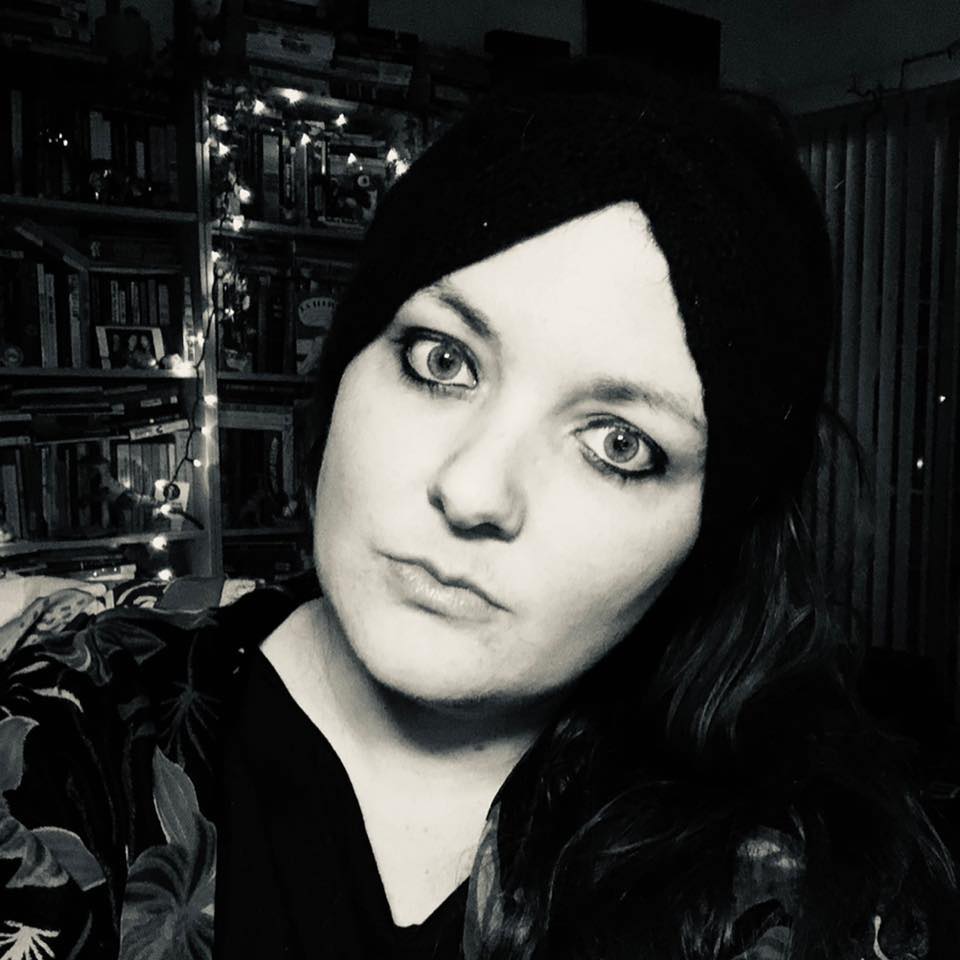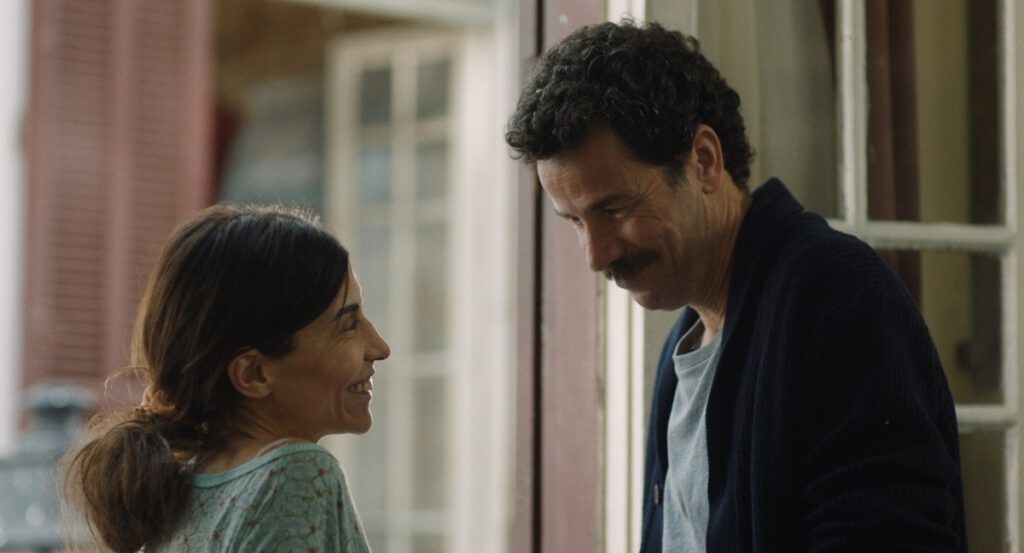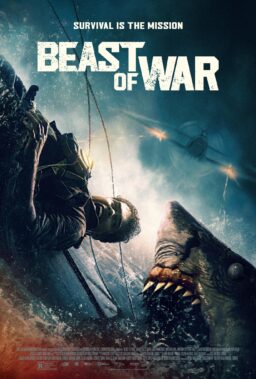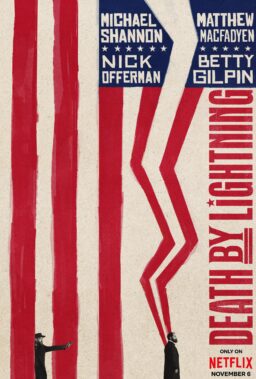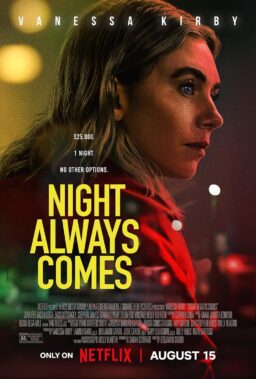Over the last decade writer/director Maryam Touzani has emerged as a sharp voice in Moroccan cinema. Her humanist dramas “Adam” and “The Blue Caftan” both center characters at odds with the society around them while exploring the tension between tradition and modernity.
Before her narrative films began screening at the Cannes Film Festival and were the Moroccan submissions for the Oscars, Touzani sharpened her keen eye for the complexities of humanity while studying journalism in London. In her documentary work, Touzani spotlights those on the margins of society, like sex workers in “Sous Ma Peau Vieille” and exploited children who work as domestics in “Aya va à la plage.”
Inspired by her own parents, her narrative debut “Adam,” tells the story of widow Alba (Lubna Azabal) who illegally shelters Samia (Nisrin Erradi), a heavily pregnant unmarried woman. While Touzani’s script critiques outdated laws and social mores, it does so by rooting the film in the rich interiority of the characters. Its beauty lies in how Touzani deftly reveals the shared humanity of these women.
Her most recent film “The Blue Caftan” similarly examines the unexpected connections that arise when your heart is open to them. In the film Saleh Bakri plays caftan maker Halim, a closeted gay man, who lives and works with his wife Mina (Lubna Azabal). After the arrival of a new apprentice named Youssef (Ayoub Missioui), the dynamics of their relationship shift irrevocably. Neither films are tragedies; they are films about warmth and love in many forms. They leave you ready to believe in the best parts of human nature.
For this month’s Female Filmmakers in Focus column, RogerEbert.com spoke to Touzani over Zoom about her Oscar-shortlisted film, writing from emotions, the many facets of love, and the power cinema has to spark important discussions.
I read in a few earlier interviews about how you came up with this idea from a feeling that you got or emotions that you had speaking to a man while you were scouting your previous film “Adam.” I’d love to hear a bit about the process of starting from an emotion and building a story around that.
Whenever I write a script, it’s always triggered by an emotion. An emotion that can come from meeting a person and what that can provoke. But it has always, always been an emotion that has been at the origin. An emotion or a series of emotions that I feel started to build up inside. For different reasons. I think that means sometimes when you look back you find things that have been there, lingering under the surface for years, and you just don’t know it. And every once in a while, they’ll resurface. And then there is a moment when they will come up very, very, very violently. In any case, when I feel that, I can’t shut them down anymore. And that’s when I start to write. When I write it’s always very, very instinctive. It never comes from anything rational. I never think in advance of what film I’m going to write about, or what story I’m going to write about. It’s always triggered by something. The moment I start writing, I never even know where I’m going, basically.
Do you think your background in journalism affects how you craft those stories or how you start thinking about the characters you’re creating?
I think it probably does, because what made me want to become a journalist was my interest in listening to other people’s stories. I love being aware of other people’s realities. I used to love writing about that, putting that in words, retransmitting the experience of others, giving them a voice through what I wrote. For me, it was really the reason why I wanted to become a journalist. So I think that naturally, what attracts me, or what makes me happy, what makes me react interiorly is always the same thing. It’s human stories.
It’s also all these things that I feel a lot of times cannot be put into words by others or situations that cannot be talked about. So it’s also a way of being able to give a voice. Before it was through writing only, and now it’s changed over the years for different reasons. Because even the evolution from journalism to filmmaking came somehow very naturally. It came out of a need to tell a story, and it’s always the need that makes me write that film now.

Once you start with an emotion, do you then craft visuals or do you craft the characters first?
When it’s an emotion it’s generally provoked by a character or for instance, this man in the medina that I was talking about when I was scouting for my previous film, what he provoked was a very vivid emotion, because he reminded me of other men that I had seen growing up and stories that I had seen, couples that had been married just to keep a facade because they could not be freely who they want to be. Most of the time it was men who got married, who had children, who were obliged somehow to keep this kind of facade on an everyday basis. And growing up, of course, that’s something that touched me.
But when I met this man in the medina, all of a sudden it was a, it was uncanny. He was flesh and bone. We did not talk about anything intimate, but there are things that are just … and that’s why I’m talking about emotion. He brought all these things to the surface, and I felt the weight of all these things that he could not necessarily say. So basically, from there he stayed with me until I started to write. And then with this emotion, there’s always a character that comes with it and the character that I imagined is not necessarily the man that I met in the medina, but he has his struggle, his struggles are somehow similar. What he’s experienced or somehow what I imagined in any case.
From there, the other characters came along, for example, Mina came along because, as I imagined Halim and as I imagined him married, I also imagined what his wife would be feeling for all those years. I never think of how many characters are going to be in the story or who’s going to be in the story or how they’re going to evolve. I just really let myself get carried along by a feeling, and sometimes it feels as if I really live, as I’m writing, with my characters. It’s like I’m in another state.
I love the caftan as both a symbol of his care, but also a symbol of their relationship and a symbol of traditions and modernity all sort of mixed together. How did you land on the caftan as a central figure in this process?
The caftan is something for me that symbolically means a lot. When I wrote the film, I didn’t realize why I had Halim as a traditional caftan maker. I only realized later as I was writing that it’s because I grew up with a caftan that I always saw my mother wearing. It’s a 50-year-old caftan, when my mother gave it to me. I grew up seeing her wearing it as a little girl at all the big occasions. She had others, but this one was special. This one is all handmade embroidery, it was just magnificent. I was awed by this gift.
The day she gave it to me, I realized how beautiful it was to own this piece because I had a feeling in it there was a whole part of her life, of her experiences. I remember seeing her go off to a wedding in this caftan. And then it’s like if I were wearing it, it was like having this experience of, I might sound strange, but I had a feeling that I was experiencing all these things. And it was beautiful because it was charged emotionally with all she had experienced.
And of the man that made it as well, because she had always explained to me how it had been made. The intricacy, the time it took, the work behind it. And there was a phase where I imagined this man spending months trying to make this beautiful garment. Today we live in a world where everything goes very quickly. Where to buy means replacing, throwing away, and moving on. I just love the things that stay. I think I am really nostalgic for certain things, you know, but I love the value of things that can stay and be passed down from one generation to another and things that define time as well.
That’s why I wanted Halim to be this man who is a little bit … it’s true that when you’re observing that there is something about another age in him. There is, in the way he dresses and the way he is in his attitude, that is not modern. He holds on to this tradition that is beautiful. I think it is a beautiful tradition.
So, basically, this caftan, for me, I didn’t even know why at the beginning. But I think all the things are there for a reason. That’s why I think things mark you when you’re young, when you’re a child, or when you’re older. I mean, everyday life, maybe we get marked by different things, but some things take a lot of space and stay there. Then one day they come out. This caftan came out in the film for this reason, I guess. Because also through this caftan, I wanted to be able to understand further the character of Halim.
Halim is a man that closes himself off from the world because he tries to protect himself from a society that doesn’t necessarily want him, that doesn’t accept who he is. And he’s aware of that. So for him, it’s a way of being in his own world and this kind of cocoon as he’s working with this passion. While he’s working, he’s also sewing his wounds. He’s also stitching his wounds.
He’s making this beautiful caftan for other women to wear, even though there is a small part of his existence that he can’t wear out in the open, in the alleys of the hammams or in the dark somehow. So there is also this complexity between the art form that he makes, that he wants to keep alive, and this tradition that he is trying to save through transmission as well, by transmitting things to Youssef. He’s tried before, but it hasn’t worked with other apprentices. And there is a part of this tradition that is also keeping him from being who he is. So he’s torn as well.
I also wanted to add one thing about writing. When I’m writing, it’s true that it is the emotion and the characters that shape my writing. But it’s also that, as I write, it’s always very visual. For me, it was also about the way this caftan was being developed, the details. It was about seeing this golden thread transform little by little in front of our eyes, not just to show a bit. Because for me, in order to understand who this man really is, I really had to delve into the details that we don’t necessarily see in our everyday lives. If you look at a caftan maker, you don’t necessarily look at his needle, but here for me, it was important.

I wanted to ask you about collaborating with your cinematographer Surdej, because the way she films the caftan and his movements, is so almost sensual but also very reverential. It’s really beautiful. Did you discuss with her any art or other films in order to achieve that feeling?
Yeah, definitely. We spoke a lot with Virginie. My writing is always very visual. When I write I have the textures and I have the colors. When I write those it’s almost like photos or in images. I spend a lot of time before filming preparing the set design. The colors and textures, for me, are not there just there; they have to be able to tell the universe of these particular characters and to help us delve further into their universe. For this film, sometimes it was like paintings of these characters, with these colors that will tell things about them.
Halim touching the fabric, I really wanted us to feel the sensuality of that moment. I wanted a lot of things to not necessarily be said with words, but to be felt, through the characters glances through the characters that the way once again their touch. I wanted it to be more carnal and that’s where I wanted us to feel the character and of course with Virginie, we spoke a lot. I paint a lot as well. I love painting. So I love color composition. I love working on the light. I’m very inspired by the chiaroscuro in Caravaggio’s paintings. So all these things of course, I discussed a lot with Virginie beforehand.
I really wanted to prepare all the shots as I had visualized them, and Virginie is incredible because she is truly sensitive. She knows exactly what I want to tell through each shot. She helped me really go in the direction of where I want to go. Working with her is beautiful. The way I wanted to illuminate the characters, for me, the light is obviously extremely, extremely important. And the Virginie is extremely talented and sensitive to all of this.
You mentioned the various ways that love is shown through touches and in glances. One of my favorite scenes is when Halim and Mina have had an argument and then Mina cooks rfissa. It’s such a huge gesture from her. I’d love to hear your thoughts on the various love languages that make their way into this film between the three characters.
Rfissa is delicious. It’s true that we tend to try to simplify love a little bit; to classify love. It’s always about putting a certain label on certain kinds of love. I think that there’s a moment where the boundaries, the lines between all these loves are blurred, because there are emotions that can have different phases, different forms. For instance, Mina at the beginning, she loves her husband profoundly, and he loves her profoundly. I wanted to explore that, because it’s not a marriage of facades, you know, they have learned to love each other in a different manner, they have redefined their love, because they love each other. You know what I mean?
But at the same time, Mina has also become somehow a mother to him in some aspects. There is this kind of maternal love that has slipped inside of the story. Because she cares for him like a mother would care for a child that maybe can’t manage or can’t cope. She protects him from this society, because she knows how hard it can be. She tries to do all the things he does not like doing. Managing the clients. She’s got the personality to do that. So she’s always there trying to protect him until she realizes at the end that maybe she has over protected and then she will one day leave. She’s going to leave and she’s leaving behind me a man that does not love himself, does not accept himself. So it’s a wake-up call for her. Death is a wake-up call for her. She will transcend herself out of love, because she has also protected herself somehow and protected their relationship because they love each other for all these things that she couldn’t cope with. As her days are numbered, what matters the most to her is to leave behind her a man that accepts himself and loves himself and is proud of who he is. Because it’s only his pride that’s going to help him have a chance of being happy without her.
When Youssef comes into the family, because it’s a family, his relationship with her at the beginning, of course, is complicated, because there is this jealousy. It’s normal. Somebody’s taking her place. But then she realizes that her husband is falling in love. It’s not the same as the other things. It’s not only physical, there’s something beautiful going on in front of her eyes. And when Youssef comes, the love dynamics are something I really wanted to be able to explore and the boundaries there and our definitions of love. Because I really believe that love has so many phases, so many ways of loving, so many facades. It’s so complex. It’s as complex as the caftan that’s being made. I think it’s a pity to simplify it.
When you were going about casting, obviously, Lubna Azabal was in “Adam,” but did you start with her? Also, how did you make sure you had the right dynamic in the casting between these three actors?
I had Lubna in mind when I wrote. I only had Lubna’s face in my mind. I knew it was gonna be Lubna from the very start. I still hadn’t said anything to her. I only said it to her after the script was finished. But as I wrote, I wrote with Lubna’s face because I had worked with her on “Adam,” and I knew her. I know how she is. She’s very true to the character. She cries, she acts, she lives the parts that she acts like she really believes in it. I knew that this was a part for her. I knew that together we would be able to delve into the depths of Mina, because Mina is a very, very complex character. And I knew she would be able to take the character there. And I believe she did. She went even further. She is somebody who doesn’t go halfway. If she believes, she will just really go all the way, she will give everything. And she really had a belief in this character. We spoke a lot beforehand. We worked a lot from a distance, and then she came and then we worked in person. It was really about working on the psychology of this character. What this woman has experienced. What she’s experienced for 25 years and where she is in her life now. And just really being as true as possible to the character of Mina. Trying to really look for her truth.
With Halim, of course, and Youssef, when you don’t have a lot of characters, each character is essential. Each one has to be just true to their part completely, but at the same time, there has to be a truth between them. There has to be a real chemistry between them. When I cast Halim, I knew Saleh Bakri was right for the part because there was this humanity in him that I felt even before I met him. I’ve seen his films before, but even when you look at photos of him, there’s something in his eyes. There’s this humanity.
Soulful eyes.
Yeah. they’re soulful. There’s so many things that you know already. When we spoke about the script, I felt that.
Youssef, I had looked at a lot of young actors for the part of Youssef. Many who were very talented, but I didn’t find my Youssef right away. But when I met Ayoub Missioui, I could see there was something just wonderful about him. On the surface is this good-looking young man, but he’s so much more. And that’s exactly Youssef. Youssef is so much more. He’s got this depth, he’s got this life experience that makes him very rich inside, that is going to allow him to see things that maybe somebody his age would struggle seeing. It was wonderful to be able to work on this chemistry with them, because it was just really about keeping the right emotion, the right balance, and they really were having the right chemistry between them.

Both of your films could be labeled as tackling taboo subjects, and I was wondering if you consider yourself a political filmmaker.
I just tap on things that touch me. I always write about things that move something deeply inside. It’s really when I feel that there’s something I can’t shut off anymore inside that I talk about it. I think that naturally, I am touched by all these voiceless stories, all these people that cannot have a chance to talk about their experiences. Maybe it is taboo because it is not spoken of. I’m very sensitive to that. To be able to help give them a voice through a film, to be able to make them exist, make their stories exist, make their stories important, make their stories be heard, for me, that’s something essential. It doesn’t come from something rational. But I think that it’s just that naturally those are the stories that speak to me. I don’t know if I would call it political cinema.
How do you hope audiences come away from this film once they’ve gone through this journey with these characters?
Depends on the audience. For example, in Morocco, I really hope that it can be able to bring about a change; a change in mentalities, a change in perception/ The film is above all a film about love. Period. All these kinds of different loves, but in these loves, there is one love that is not spoken about, in general that is taboo. And this one love, I also want to be able to exist because I think it is essential that it exists. Today we live in a society where you know, not only is it a taboo, but of course it is illegal as well.
I’m really hoping that the film will be able to contribute in bringing about a real debate about the LGBTQ community about changing the laws. If you have laws that punish, that incriminate love between two people of the same sex, then how can you expect the mentalities to change? These things have to go hand in hand, so I’m hoping as well that the film can create a necessary debate. It’s just necessary. It hurts me a lot to see people not being able to be who they are, to have to hide to just be able to love you. How can love be criminalized?
I just want the audience to feel these three characters and to try to also transcend maybe their preconceived ideas. We all have a way of defining relationships, a way of defining couples away, and I think that as an artist for me the most important thing is to be able to transcend all these ideas, and to just see these characters for what they are and to see the love that there’s between them.
Are there any female directors who either inspired you to become a filmmaker or that you just think maybe not enough people know about and you’d like to highlight so readers could discover their work?
It’s a complicated question. It’s very complicated. I love the work of Naomi Kawase. I love her rhythm. I love that she allows herself the time to explore her characters, to have the feeling that there’s something very detached from what is expected sometimes. She is somebody who I definitely find inspiring. Because she’s not conventional. She tells her stories the way she wants to tell them. She imposes her rhythm when she wants to impose it. Filmmaking is something so very personal.
I think you always have inspirations that you don’t necessarily know where they come from. My inspirations come a lot from literature. I’m a very literary person in my exploration of character. The way I try to explore character, the way I naturally explore character as well, is just from reading. I think when you read you have a different perception of the character, and I think that there is an impact of that on the way I tell the stories.
